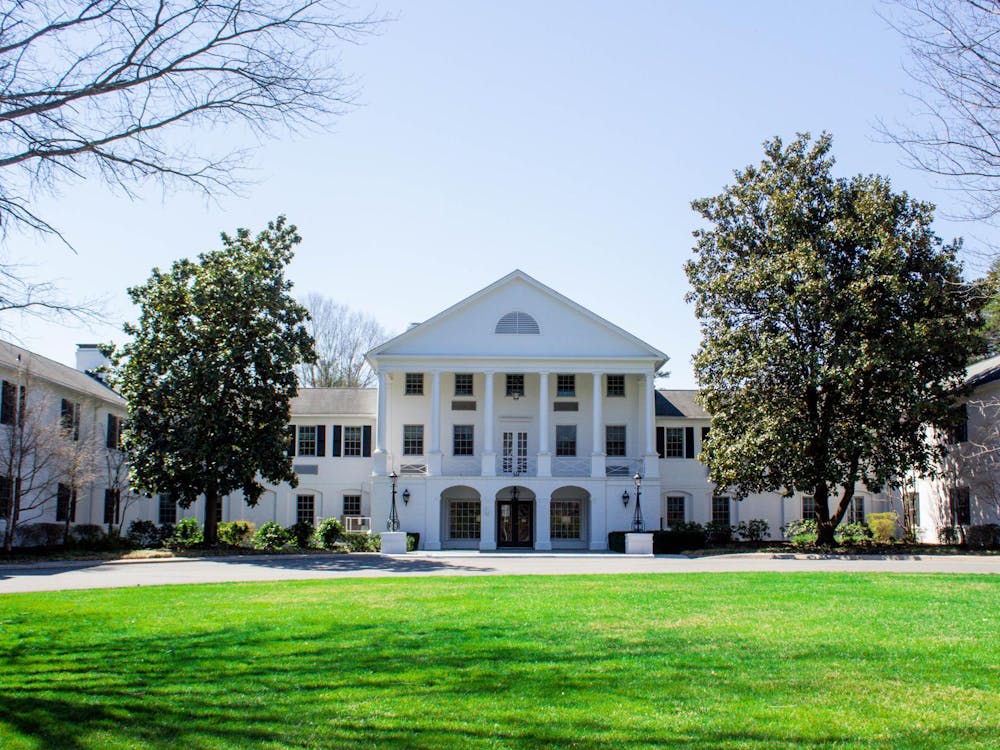Earlier this month, Viewpoint writer Tsering Say penned a column arguing the Balz-Dobie dorm fosters elitism and lacked diversity. Unsurprisingly, Say’s column ruffled some feathers. Frustrated by Say’s argument and citing their own survey, first-years and current Balz-Dobie residents Kristen Barrett and Wells Tu responded, hoping to disprove Say’s points. Unfortunately, Barrett and Tu’s article is methodologically weak and rests on false presumptions about both honors and non-honors students.
Barrett and Tu’s survey has a slew of flaws that make their data unreliable. The first issue is the use of a web survey. Though convenient and affordable, web surveys are notorious for their awful response rates. Moreover, this sample was non-compulsory, meaning that its results are likely altered by self-selection bias. Namely, those with an agenda to prove Balz-Dobie is indeed “diverse and inclusive” may be more likely to reply to the survey. Additionally, given the outrage that the article produced, its respondents’ replies are also susceptible to social desirability bias. That is to say, in an effort to disprove Say and other critics, respondents may misrepresent their demographic information by falsifying greater diversity. Given all these flaws, the authors’ survey is a methodological failure and its results are likely not representative of the Balz-Dobie population.
By providing their survey results, the authors also attempt to demonstrate the diversity of Balz-Dobie. However, Say was not arguing about the current demographics of Balz-Dobie. Rather, her claims were about the general demographic trends of honors dorms residents. Accordingly, one cannot use cross-sectional data (i.e., data collected from one point in time) to disprove her claim. Instead, one would need to use longitudinal data.
Though they attempt to dispel the notion that Balz-Dobie fosters elitism, Barrett and Tu claim they were chosen to be honors scholars characterized by "crucial factors that have even stronger correlation with academic success: hard work, passion and commitment." Such a claim begs the question: How are those attributes being measured? Despite indirectly insulting nearly the entire University community with such a claim, the authors provide no data to reach that conclusion.
While there may be some lower-income students in Balz-Dobie, the typical resident is likely affluent. This generalization is supported by the decades of research demonstrating that those atop of the ivory tower are indeed the wealthier populations. It is naive to presume that the University is any different from other high-ranking, predominantly white institutions.
That said, comments about being harder working than those occupying lower social strata echo the debunked yet repugnantly persistent “culture of poverty” thesis, which claims poor people are unsuccessful on account of their own personal deficiencies. By making a similar case, Barrett and Tu shame non-honors students as lacking a work ethic, passion and commitment comparable to honors students. This tactic is actually a well-recorded method of justifying inequality, making the authors’ claims unsurprising.
Now, even if Balz-Dobie does house some lower-income students, it is worth investigating the background of those very students. While these lower-income students may be materially different from their higher-income peers, there is a possibility they are culturally akin to their wealthier peers. For example, in one study, Harvard sociologist Anthony Abraham Jack found that many lower-income students who attend higher-tier universities often attend elite high schools. That is, these lower-income students have experienced a great degree of socialization into elite society. While lower-income students who attend top-tier high schools do offer different experiences, they have nonetheless spent a significant portion of their formative years being socialized into becoming “the privileged poor.” This socialization means some of these lower-income students may also espouse views informed by the insularity of elitism.
The authors also seem to disregard the plight of many lower-income students. The authors imply they and other honors students are more hardworking than the rest of the University undergraduate population, but ignore that many lower-income students have to work to help their families make ends meet on top of maintaining good grades. This predicament is something many (though not all) Balz-Dobie residents likely do not experience. As numerous studies show, throughout much of their lives, lower-income students experience greater stress than their higher-income counterparts. Consequently, many of the wealthier honors students cannot experientially fathom the hardships faced by lower-income students.
As they may feel personally attacked, it is understandable that the authors may want to defend the honors dorm system. However, Barrett and Tu’s attempt to defend the system is overwhelmingly flawed and reinforces stereotypes that others may have about an honors dorm’s residents. While Balz-Dobie probably does contain some lower-income students, to be satisfied or praise the socioeconomic (and racial) breakdown presented in Barrett and Tu’s survey results is to be complicit in the reinforcement of the social forces and conditions that foster educational inequality. Contrary to what the authors may think, the reasons for the overrepresentation of wealthier students are not personal traits, but a well-documented system of privilege.
Alexander Adames is an Opinion columnist for The Cavalier Daily. He can be reached at a.adames@cavalierdaily.com.






